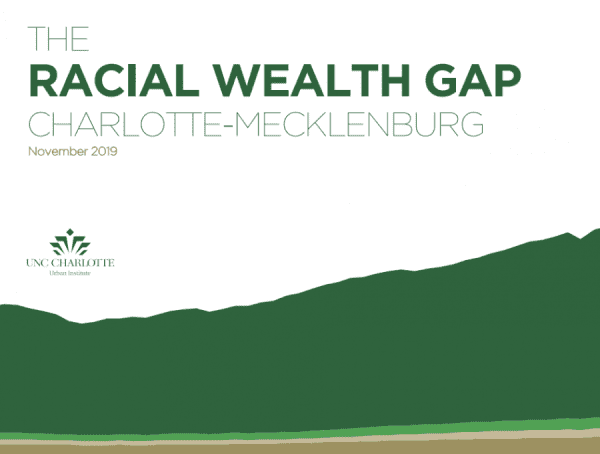Exploring the racial wealth gap and housing

Charlotte’s notorious “50-out-of-50” ranking for economic mobility has many roots, ranging from systemic discrimination to gaps in education, health and jobs training.
But one of the most consequential factors for intergenerational economic mobility is likely wealth, and the simple fact is that some families have much more than others. A key component of wealth is home ownership, an opportunity that, despite the ubiquity of the American Dream mythology, many families of color have long been locked out of.
The Urban Institute will present research on Feb. 11 at DavidsonLearns about the racial wealth gap and how the legacy of housing discrimination in Charlotte and Mecklenburg have contributed to that disparity. The virtual meeting starts at 4 pm, and while it’s free, space is limited (Zoom information here).
[Read ‘The Racial Wealth Gap in Charlotte-Mecklenburg’]
Here are five facts about the racial wealth gap and housing:
- In the U.S., white households have a much higher median net worth than households of color: $171,000, compared to $17,600 (or one tenth the net worth of White households) for Black households and $20,700 (or one eighth) for Latinx households.
- White households are more likely to own their homes in Mecklenburg County when compared to other racial and ethnic groups. In 2017, over two-thirds of White households owned their home. A smaller portion of Asian (50%), Black (42%) and Latinx (38%) households owned a home at that time.
- One reason for that is the echoes of historical displacement. In the Brooklyn neighborhood once in Second Ward, more than 1,000 Black families were displaced, along with 216 businesses, as part of the “urban renewal” program that demolished most of the neighborhood and replaced it with sterile government buildings and the county jail, without rebuilding the homesNonwhite neighborhoods were also divided and demolished for federal and local highway development, with roads like Interstates 77 and 85 slicing through.
- Even today, Black and Latinx home loan applicants have much higher denial rates than white households: 11.9% and 10.5% for Black and Latinx applicants, vs. 5.6% for white applicants. These numbers aren’t controlled for denial reasons.
- In Charlotte, 37.3% of families experience asset poverty, meaning they do not have enough assets or savings on hand to pay for basic necessities for three months without income. Households of color are more than twice as likely to experience asset poverty than White households (42% and 18%, respectively).
The impact of the racial wealth gap cascades throughout our community, and is especially apparent during a crisis like the covid-19 pandemic, when wealth functions as a safety net during prolonged economic downturns. Read the Racial Wealth Gap in Charlotte-Mecklenburg Report, and join us to learn more.